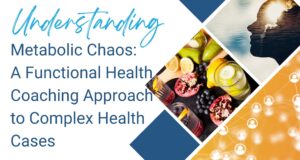Salmon is a fatty fish, high in healthy omega-3 fatty acids. It’s a nutritional powerhouse – essential fatty acids, vitamins, and high quality protein. Omega-3 fatty acids support heart health, brain function, and reducing inflammation. Vitamins B12 and D support nerve function and bone health. Additionally, the antioxidants in salmon, such as astaxanthin, can help protect against cell damage and chronic diseases. Sounds great right?
However some people avoid a variety of foods based on misinformation or something they heard once on social media. Let’s Chew the Facts® about salmon.
Is Farm-Raised or Wild-Caught Healthier?
Both are safe to eat, and will provide you with those essential omega-3 fatty acids.
Salmon is high in omega-3 fatty acids and is one of the best sources of DHA (docosahexaenoic acid) and EPA (eicosapentaenoic acid). Wild salmon may, in some cases, have higher amounts but farm-raised salmon is still an excellent source.
The benefits of consuming fish twice a week outweigh any potential risk.
There’s evidence that DHA and EPA can:
- Reduce risk of mortality from coronary heart disease or sudden cardiac death
- Reduces risk of heart attack
- Lower triglycerides
- Lowers blood pressure
It’s important to consume foods high in DHA and EPA, or take a DHA-EPA supplement, to reap all of the health benefits.
Should I worry about “Color-Added” Salmon?
There’s really no concern about “color-added” labels on salmon. Farm-raised salmon may be given feed which contains a pigment called astaxanthin. Wild salmon get it from the algae, krill and crustaceans in their diets. Astaxanthin is a powerful antioxidant that is naturally present in many foods.
Essential Fatty Acids in the Diet: DHA, EPA, and ALA
Wondering where else you can get omega-3 fatty acids in your diet? Omega-3 fatty acids include ALA, EPA and DHA. However not all omega-3 fatty acids are the same. While ALA can be converted to DHA and EPA, the process is not efficient and doesn’t make it as readily available in the body. Food sources of ALA include nuts, seeds, avocado, legumes and beans.
In addition to these food sources of ALA, it’s essential to consume foods high in DHA and EPA. Foods highest in DHA/EPA are fatty fish. In addition to salmon, mackerel, anchovies, sardines and herring are good sources, with the highest amounts of DHA and EPA.
Handout – How Much Omega-3s Are In Your Favorite Fish
How Much DHA and EPA Do You Need?
Most people are deficient in these two omega-3 fatty acids. The general recommendation for DHA/EPA are 250 milligrams daily. Most people are only getting about 90-100mg. Blood level samples taken across the United States showed that every state has a low blood status of DHA/EPA.
Two servings of salmon, or other fatty fish, per week is the goal. If you aren’t able to get those servings in each week, a supplement is a good option. You may not even need the supplement every day. Let’s say you do eat salmon once a week – simply taking a 250mg dose, a few days a week, can boost your blood levels.
Omega-3 Needs of the Pregnant Population
When people think about eating wild-caught fish, there may be two concerns that often come to mind – pollutants and mercury content. Our food supply is regulated for such things. Some studies have shown that farm-raised salmon may have less pollutants than wild caught due to the management of feed. However wild caught salmon is still well below the levels of concern for organic pollutants.
Pregnant women may be leery of consuming too much mercury, and avoid eating fish during pregnancy. As far as mercury goes, the content does vary between different species of fish, but salmon is not a high mercury fish.
Nonetheless, fish intake may not be high enough to get the DHA-EPA this populations needs, so pregnant women may benefit from taking an EPA/DHA supplement (check with your doctor). Some research suggests that supplementing with DHA-EPA during pregnancy can help reduce pre-term births.
Looking for easy ways to cook salmon?




